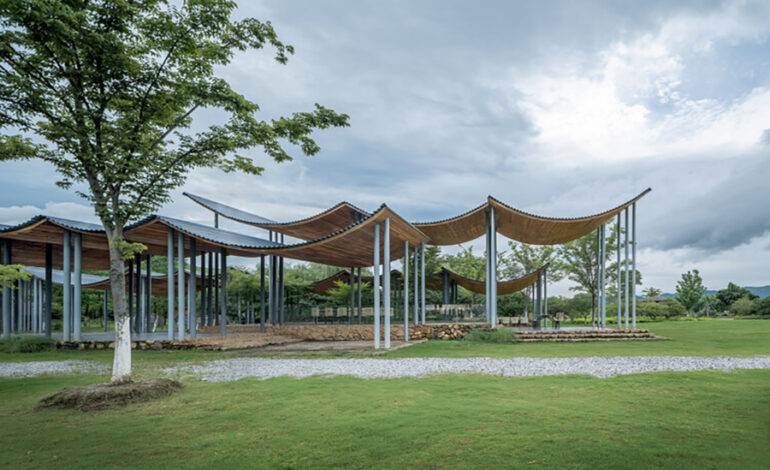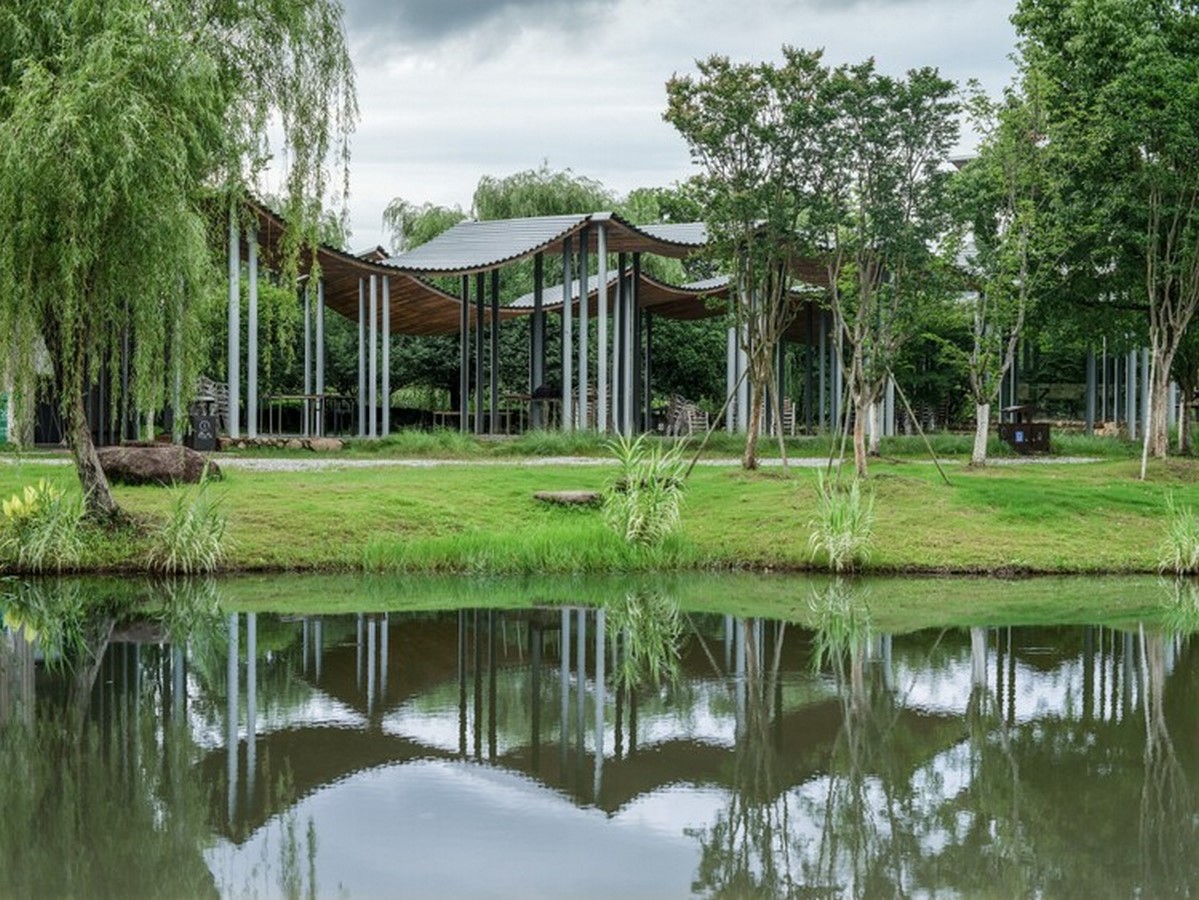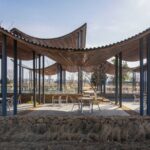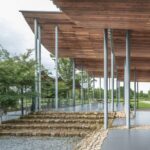Exploring Harmony Jingshan Flower Sea Tent Pavilion

Introduction
In Hangzhou, China, the Jingshan Flower Sea Tent Pavilion stands as a testament to the harmonious relationship between architecture and nature. Collaboratively designed by Beeeed Atelier and Zhejiang A&F University Landscape Architecture Institute, this pavilion offers a unique space for visitors to immerse themselves in the beauty of the surrounding landscape.

Concept and Inspiration
Situated in Jingshan, renowned for its tea culture and serene forest landscapes, the pavilion’s design draws inspiration from the intrinsic connection between humans and nature. Embracing simplicity and openness, the pavilion features a suspended roof reminiscent of traditional tea sunshades found in the area, fostering a sense of tranquility and communion with the environment.

Functionality and Flexibility
Designed to combat Hangzhou’s extreme weather conditions, the Tent Pavilion primarily serves as a seasonal retreat during spring and autumn. Offering simple meals, tea drinks, and coffee, the pavilion doubles as an open space for children’s flower cognition courses. Its flexible usage and seasonal adaptability ensure a dynamic and inviting atmosphere year-round.
Architectural Design
Comprising modular units arranged in a grid pattern, the pavilion features activity areas and service zones enclosed by four sets of tents. The roof structure, characterized by layered roofs that appear to float, creates an illusion of openness and spaciousness. Wooden “curtains” suspended from thin pillars evoke a sense of wandering through a forest, while hidden junction nodes contribute to the pavilion’s infinite spatial quality.


Construction Challenges and Solutions
The implementation of a “rigid suspended roof” posed several challenges during the design and construction phases. To overcome these obstacles, a flexible steel-wood combination form was adopted, ensuring structural integrity and stability. Additionally, modifications were made to the original design to accommodate cost constraints, resulting in a curved steel grid structure that enhances the rigidity of the pavilion’s shell.

Integration with Nature
Despite its architectural complexity, the Tent Pavilion seamlessly integrates with its natural surroundings. Steel columns, strategically distributed to resemble a jungle-like environment, enhance the pavilion’s aesthetic appeal while providing structural support. The pavilion’s design encourages visitors to reconnect with nature and appreciate the beauty of the Flower Sea Park.


Conclusion
The Jingshan Flower Sea Tent Pavilion exemplifies the fusion of architecture, landscape, and culture. Through thoughtful design and innovative construction techniques, the pavilion offers visitors a serene retreat where they can immerse themselves in nature’s beauty and tranquility. As a symbol of harmony and balance, the pavilion stands as a testament to the enduring relationship between humanity and the natural world.




















